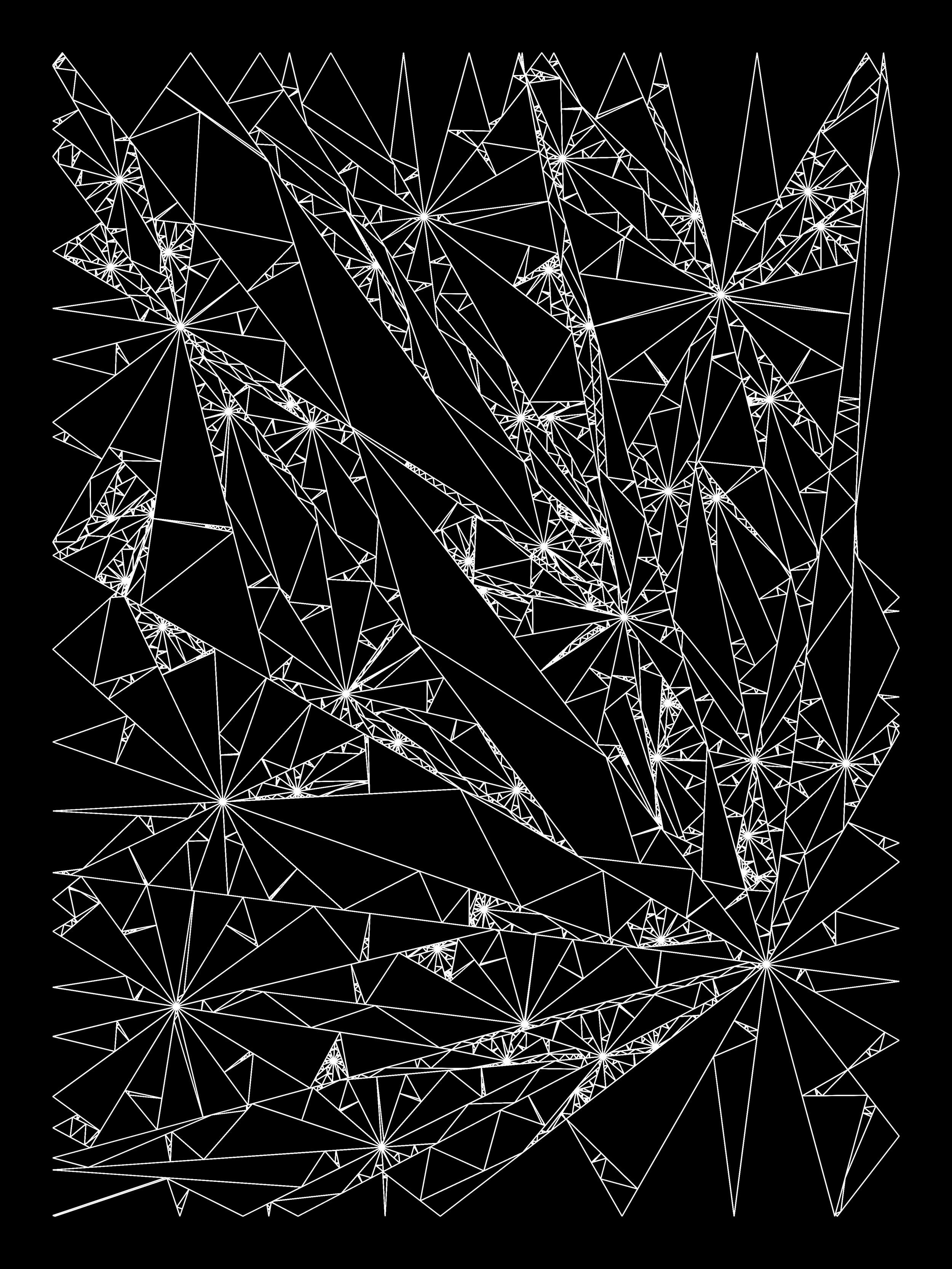LUKE SHANNON: LIGHTBREAK
Part of a series of articles & interviews released digitally that were first published in the print edition of the Bright Moments Quarterly that was distributed at Bright Moments Paris in Paris, France in February, 2024.
Bright Moments: Thank you for joining us for this interview, Luke! It’s been over a year since your first project with Bright Moments during your residency in October 2022 with the Orchids. Could you share your experiences from that initial collaboration and tell us how your work has evolved since then?
Luke Shannon: Absolutely. Orchids was a really fun project and an amazing opportunity for me. I often view generative art as a form of performance. The live minting experience at Bright Moments, where the act of viewing or collecting the art actually creates the piece, really encapsulates this performative element. Although I had contemplated this aspect before, Orchids was my first opportunity to witness and be part of this live creative process, sharing the experience with collectors as the artwork materialized before us. It was a profound experience that expanded my practice, particularly in terms of this idea of performance in generative art.
Since then, I’ve been delving deeper into physical generative art, exploring how to integrate and develop that further. I’ve been refining my concepts around algorithmic and digital art, pondering their distinctions and interplay. On top of that, I’ve been involved in several collaborations: the pattern.dst project with Gucci, creating Seating Arrangements with chairs in partnership with Tonic, and my first plot with Proof and Pace Gallery. These projects, particularly the one of one pieces, have been significant milestones for me.
Can you delve a bit more into your artistic background, including your experiences with traditional art, and what led you to explore code and generative art?
Growing up, I did a lot of oil painting, drawing, and writing. I always thought I would write and illustrate my own fiction books. But there was this other side of me that was really captivated by math and physics, and the elegance inherent in those fields. When I found generative art, it just clicked. It was this perfect blend of my interests.
In generative art, I found that writing code with a tight syntax was akin to poetry. It’s about being precise, choosing the right words, or in this case, the right lines of code, to create something visual, often with a foundation in math and physics. For me, crafting a tight, well-defined, elegant function in code is like finding the perfect word to describe something.
I realized that with generative art, I could articulate and demonstrate ideas in a way that’s similar to how you generalize in math. It’s about describing not just from one perspective but from multiple, where no single viewpoint is privileged.
I also feel that generative art introduces a new set of biases in art. There’s a shift from biases in creation to biases in curation. There’s this element of objective randomness that you can’t create by hand. You have to meticulously write everything down, line by line. It’s opened up new paths for me to explore my artistic tendencies in a more rigorous and fascinating way.
Your digital work often reflects a strong consideration for the physical dimension, even when it’s conceptual. You seem to incorporate tangible, material elements in your art, ranging from ink and paint to embroidery, and at times, sculptural aspects. What drives you to create in such a way, and could you describe your creative process?
I see a lot of these algorithms as physical entities rather than mere computer abstractions. They are integral parts of our environment, functioning in diverse ways. My focus on materiality in art emphasizes this reality. Additionally, I’ve been contemplating a concept related to the ‘aura’ of an artwork – its uniqueness, history, and reproducibility. This idea, inspired by Walter Benjamin’s The Work of Art in the Age of Mechanical Reproduction, is a work in progress. I’m still working on this idea, but it’s an interesting conception to have an algorithm that can generate multiple artworks.
Furthermore, I just enjoy making things, with code or physical media. It’s necessary to live with these materials and the algorithms behind them. Every medium is like its own system, and you can learn a lot about that system through investigating it with code. When using code, the direct, hands-on interaction is removed, providing a clear view of how the medium responds to well-defined inputs.
When you merge digital and physical elements in your work, do you envision the final output or the physical object first? What’s your approach?
Sometimes, I start with a visual concept, pursuing an idea that appeals to me aesthetically. Other times, I focus on the internal mechanics, the physics and structure within the code, creating something without a preconceived visual outcome. Each aspect alleviates the pressure from the other. I can equally start with a sketch or an algorithmic “what if”–the best works are the ones that manage to really surprise you. There’s nothing like writing code without a fixed visual expectation and then being surprised by the result.
Your project Seating Arrangements, featuring generative chairs presents a fascinating blend of physical and digital elements. Could you tell us more about it?
Seating Arrangements was incredibly fun to work on–chairs feel like the quintessential design challenge. Approaching the concept of a chair generatively brought a lot of new ideas to me. It highlighted aspects of ‘chairness’ that I hadn’t considered significant and diminished the importance of others I previously thought were crucial.
I’m fascinated by the idea of chairs as an algorithmic system with a degree of autonomy. Created by an algorithm, they exist beyond just utility. For instance, an office chair is specifically designed for human support, and defined primarily by its relationship to a person. However, in this project, the chairs straddle the line between being a functional object and a sculptural piece.
Each chair was created by either adding or removing elements. Some had all elements intact, while others had more elements removed. A valid output from this algorithm is the null chair–a chair of no elements, which has no physical counterpart.
Who or what are you finding or drawing inspiration from at present? What’s driving your creativity and curiosity at the moment?
For Seating Arrangements, I was deeply inspired by Italian designers like Bruno Munari and Enzo Mari and their ideas of construction. I find myself still inspired by that era and genre. Artists like Sol LeWitt also inspire me, particularly for their emphasis on the instructional nature of art, extending beyond just code.
Reading more about art history is another source of inspiration for me. Theorists like Walter Benjamin offer valuable perspectives that help me understand and innovate in my work. Additionally, the community of artists in the generative art space, especially the emerging artists, is immensely inspiring. I’m particularly excited about the other artists presenting at Bright Moments Paris, as they are some of my biggest inspirations.
Nature and its systems are also a fundamental source of inspiration. Observing and attempting to understand these systems, then trying to describe them in code, can lead to many interesting ideas.
Lately, I’m increasingly drawn to what might be called ‘DIY culture.’ It’s about people creating for the sake of enjoyment and sharing their methods online. While DIY often isn’t associated with traditional art, I see a powerful potential in it. The act of making and sharing instructionally online reflects a similar ethos to what I aspire for in my generative art path, albeit in a different way.
To me, the most compelling aspect of this DIY approach is that it’s often pursued for its own sake, not as a means to an end. The creators are often working on a project just for themselves and simultaneously sharing it with others.
Looking ahead, can you give us a sneak peek into your current project for Bright Moments Paris?
The concept I’m currently exploring involves an algorithm related to light reflection and refraction. This algorithm extends beyond the usual indices of refraction or typical behaviors of light, including allowing light to reflect off itself. It’s designed to be interactive and potentially suitable for embroidery.
This algorithm isn’t entirely new to me, as I’ve dabbled with it a bit in the past. However, I’m planning to expand on it, incorporating elements like animations and audio reactivity.
As someone who has already had a live minting experience for your own work with Bright Moments, what are you looking forward to in the live minting experience for the Paris event?
I’m really excited to see the live mints of all the other artists. This event in Paris seems to be oriented towards a very communal minting process, offering ample opportunities to spend time with the artists and collectors, both inside and outside the venue.
I’m looking forward to engaging in conversations and the spontaneous interactions that can arise. It’s an incredible honor to be a part of this event alongside such amazing artists.




